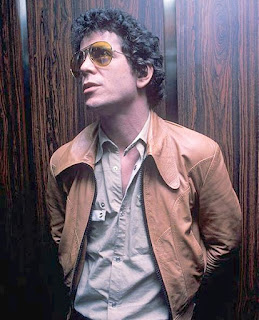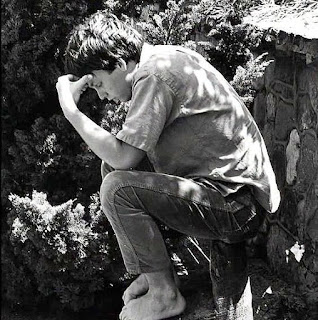Quentin Tarantino is developing a film about the Manson family murders. According to the Hollywood Reporter, the Pulp Fiction and Hateful Eight director will write and direct the as-yet untitled film, which concerns the notorious killings of five people, including pregnant actor Sharon Tate – wife of director Roman Polanski – carried out by followers of Charles Manson in 1969. Manson and four followers later received life imprisonment – and his group were also responsible for a number of other killings during the 1960s.
Details on the plot of the film remain unknown, but Deadline reports that Margot Robbie has been approached to play Tate, while the Hollywood Reporter suggests that Jennifer Lawrence is also being considered for the part. Brad Pitt and Samuel L Jackson are also being linked with roles in the film, which will begin shooting next year. The Manson Family murders became headline news around the world, and were seen as symbolic of the disorder and violence of the late 1960s, as well as the demise of the hippie movement. Tarantino’s last film, the violent western The Hateful Eight, was released in January 2016. Despite an all-star cast that included Kurt Russell, Jennifer Jason Leigh and Samuel L Jackson, the film performed disappointingly at the box office. Source: www.theguardian.com
In June 1968, Roman Polanski’s film Rosemary’s Baby had become a huge success and made the Polish director a celebrity in the United States. Sharon Tate, an actress he had married in January 1968, was not yet a star. She had appeared in Valley of the Dolls, a film depicting the sleazier side of screen fame, Polanski’s Fearless Vampire Killers, and a nude pictorial in Playboy magazine—her husband shot the session photos. Tate seemed to be the quintessential Hollywood starlet. With Rosemary’s Baby a substantial hit, Polanski and his wife had to be based in L.A., though they could and did spend considerable time in England and Europe on film projects.
They had trouble finding the right place to live, settling for a while in a Chateau Marmont apartment on Sunset Boulevard, then renting a house in the Hollywood Hills from actress Patty Duke. The place didn’t really suit them. They wanted something grander, commensurate with Polanski’s new, exalted status, and so they kept looking. Meanwhile, the couple hired a housekeeper named Winifred Chapman. Tate hoped soon to become pregnant. Despite her flashy image and nude photos, she was something of a homebody at heart. When they learned about Altobelli’s Cielo Drive property, Polanski and Tate were interested; their plans to find a new home had taken on new urgency when they learned that Tate was pregnant. Even when Polanski was away, there were friends with her all the time, quite often celebrity hair stylist Jay Sebring, who had been Tate’s boyfriend before she left him for Polanski. After their breakup Sharon and Jay stayed close friends.
In the "Manson Women" documentary of the Biography Channel it's mentioned that Jim Morrison visited the Ranch Spahn's and The Family Manson at some point prior to the murders. Jim knew one of the murder victims, Sharon Tate's ex-boyfriend Jay Sebring, who worked as hair stylist for actors in Hollywood. His clients included Warren Beatty, Steve McQueen, Frank Sinatra and Kirk Douglas. Sebring was introduced to Sharon Tate by journalist Joe Hyams in October 1964 and they had a romantic relationship until 1966, when Tate went to London to work on The Fearless Vampire Killers and began a romance with director Roman Polanski.
Jay Sebring was also the creator of Jim Morrison's famous haircut (a free-flowing hairstyle) for the photo sessions by Joel Brodsky (The Young Lion photoshoot). Jim Morrison did visit Death Valley several times in his famous shamanistic "Vision Quests" trips and allegedly met there some members of The Manson Family, who hung out at The Spiral Staircase, the place that inspired Jim Morrison to write "Roadhouse Blues"—about the drive up Topanga Canyon Blvd to The Corral. Charles Manson often hung out at The Corral with his Family. On December 9, 1970, the day after celebrating his 27th birthday, Jim Morrison sat in the Doors’ business office, reading an article from the LA Times about a grand jury having indicted Charles Manson and members from his Family for the slayings at Cielo Drive. Jim Morrison put down the paper and said to others in the room, "I think I’m having a nervous breakdown." It seemed strange Manson had seized upon the sunny music of the Beach Boys and the Beatles for his psychotic projections but he had ignored The Doors' prophecies.
Sharon Tate, here pictured around 1969, with her husband, Roman Polanski, were customers of Pamela Courson’s store, Themis. Sharon is wearing a traditional Moroccan djellaba robe. Although it has not been proven Sharon actually purchased this item in Themis, it is almost certain she bought it at Pamela's boutique.
Pamela Courson (aka Pamela Susan Morrison, Jim Morrison's common law wife) operated Themis (1968-1971), a fashion boutique that Jim Morrison bought for her with his royalty checks from the album Strange Days. One of The Family Manson's followers was seen wearing the same Moroccan djellaba robe that both Sharon Tate and Pamela Courson wore. The Manson Family were known to be thieves, or as they called it “creepy crawling,” their way into people’s homes to steal at night. We don’t know if the night Sharon Tate was murdered they stole any of her clothes, but it is very eerie that one of Manson’s followers was wearing this same rare djellaba that Sharon Tate owned in 1969—probably bought at Pamela Courson's store—at one of those “Free Manson’s” protests. Source: pamelasusancoursonmorrison.
wordpress.com
wordpress.com






























































